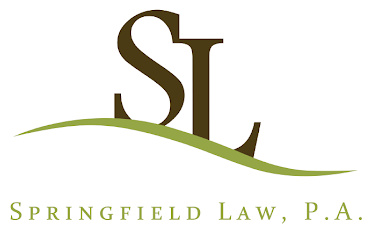RESTRICTIVE COVENANTS CAN IMPEDE DEVELOPMENT PLANS AND COST LANDOWNERS
By Jennifer B. Springfield
In addition to property inspections and verifying applicable land use designations and zoning regulations, anyone who is contemplating the purchase of land for development purposes should conduct a thorough review of the title records prior to purchase and early in the due diligence process to look for the existence of restrictive covenants (sometimes referred to as negative easements) and other easements, such as conservation easements. If such are found, consultation with an attorney concerning the impact of these on the potential purchaser’s development plans for the property should be sought. Often, owners of large tracts of land (grantors) will record a set of covenants on the entire or a significant portion of their lands prior to subdivision and sale. Such deed restrictions are usually intended to benefit all future owners of the smaller parcels bought and sold (grantees). The protections afforded by such easements becomes a property right which is enforceable by any neighboring purchaser for whose benefit it was intended.
While it may seem odd that one property owner can enforce restrictions on another person’s real property, the Second District Court of Appeal in Hagan v. Sabal Palms, Inc., 186 So. 2d (Fla. 2nd DCA 1966) explains the reasoning behind this by quoting from a 1933 Florida Supreme Court opinion in Osius v. Barton, 147 So. 862, 865:
The general theory behind the right to enforce restrictive covenants is that the covenants must have been made with or for the benefit of the one seeking to enforce them. The violation of a restrictive covenant creating a negative easement may be restrained at the suit of one for whose benefit the restriction was established, irrespective of whether there is privity of estate or of contract between the parties, or whether an action at law is maintainable. The action of a court of equity in such cases is not limited by rules of legal liability and does not depend upon legal privity of estate, or require that the parties invoking the aid of the court should come in under the covenant, if they are otherwise interested. The rule is well established that where a covenant in a deed provides against certain uses of the property conveyed which may be noxious or offensive to the neighborhood, inhabitants, those suffering from a breach of such covenant, though not parties to the deed, may be afforded relief in equity upon a showing that the covenant was for their benefit as owners of neighboring properties. At 865.
The courts have also held that while a grantor can reserve the right to amend deed restrictions, amendments must be reasonable. Reasonable amendments are defined as amendments which do not destroy the general scheme or plan of development. A general scheme exists where a tract of land is divided into lots to be sold subject to uniform restrictions imposed thereon. An unreasonable change is one that creates an inconsistent scheme, alters the relationship of lot owners to one another, modifies the relative benefits as between the grantor and grantees, or changes the right of lot owners to individual control over their own property.
Therefore, while it may be possible to alter restrictive covenants to facilitate a plan of development, it can be a time consuming and costly process to achieve. All of the property owners benefitting from the restrictions should be asked to approve any amendments to such covenants, and/or the purchaser/developer should be asked to hold harmless, defend and indemnify the lot owners who support an amendment which benefits a developer. No matter which approach is taken, all benefitted lot owners should be afforded due process – notice and the opportunity to be heard.

